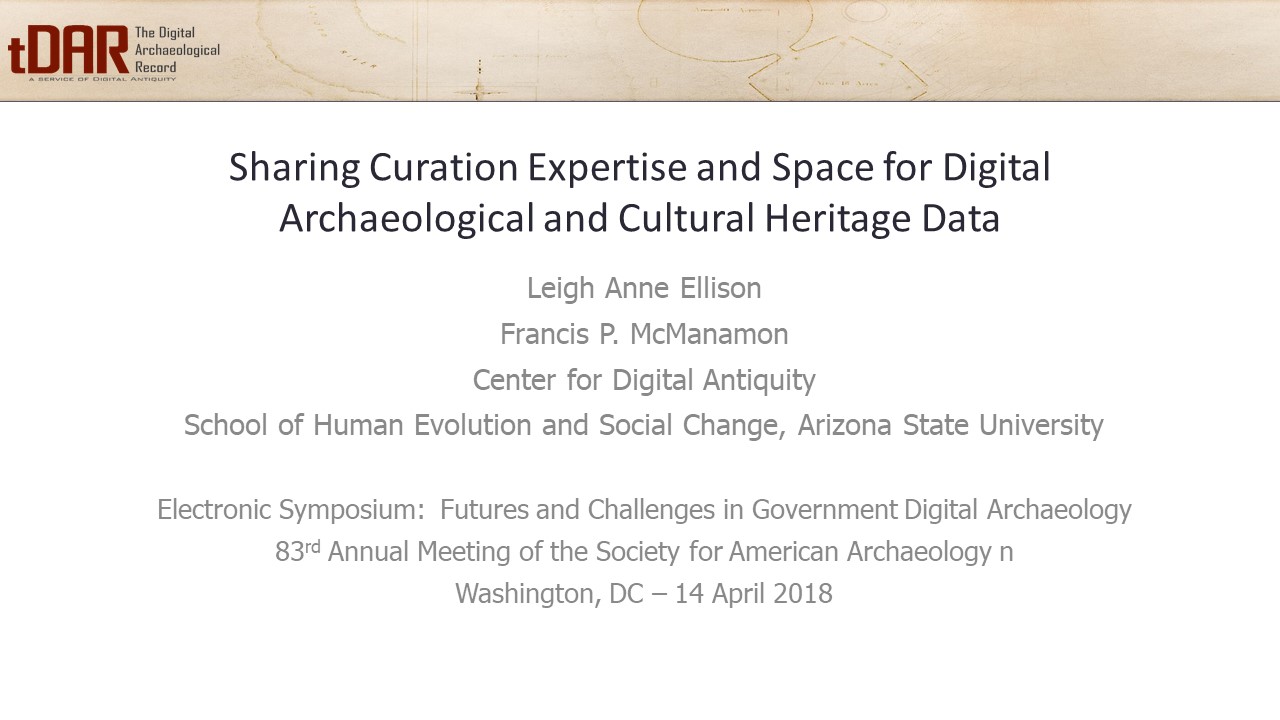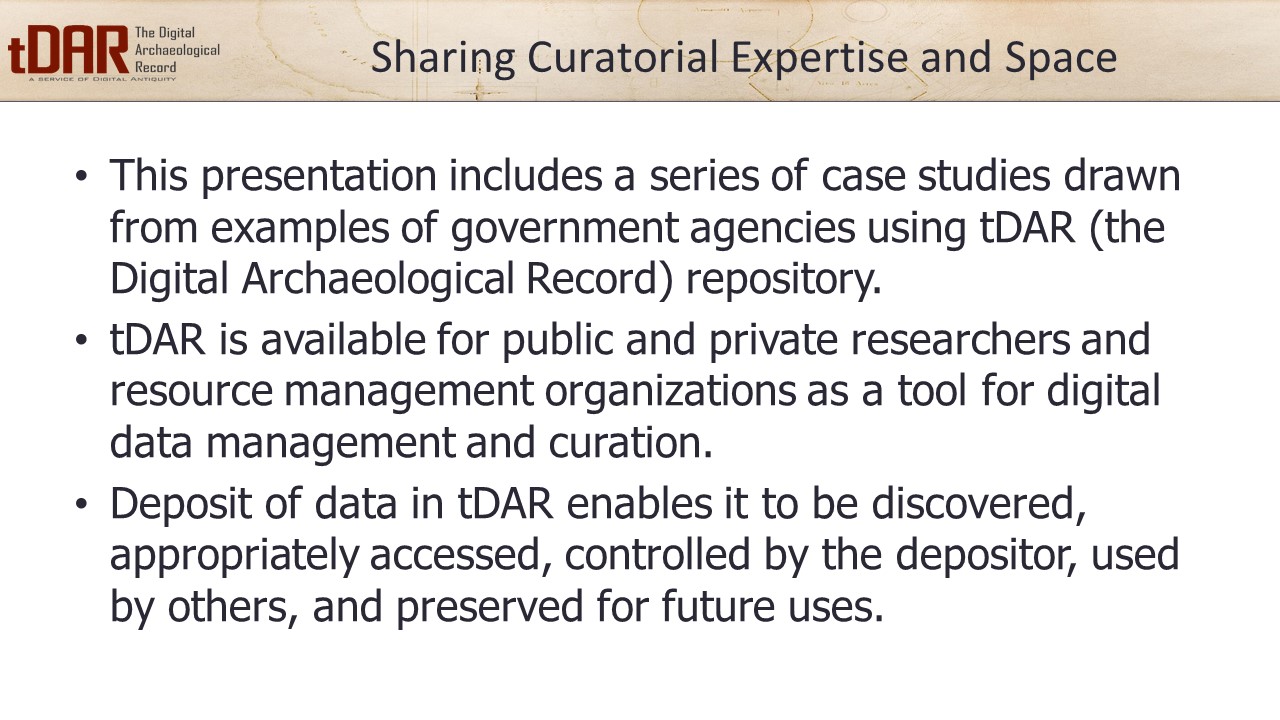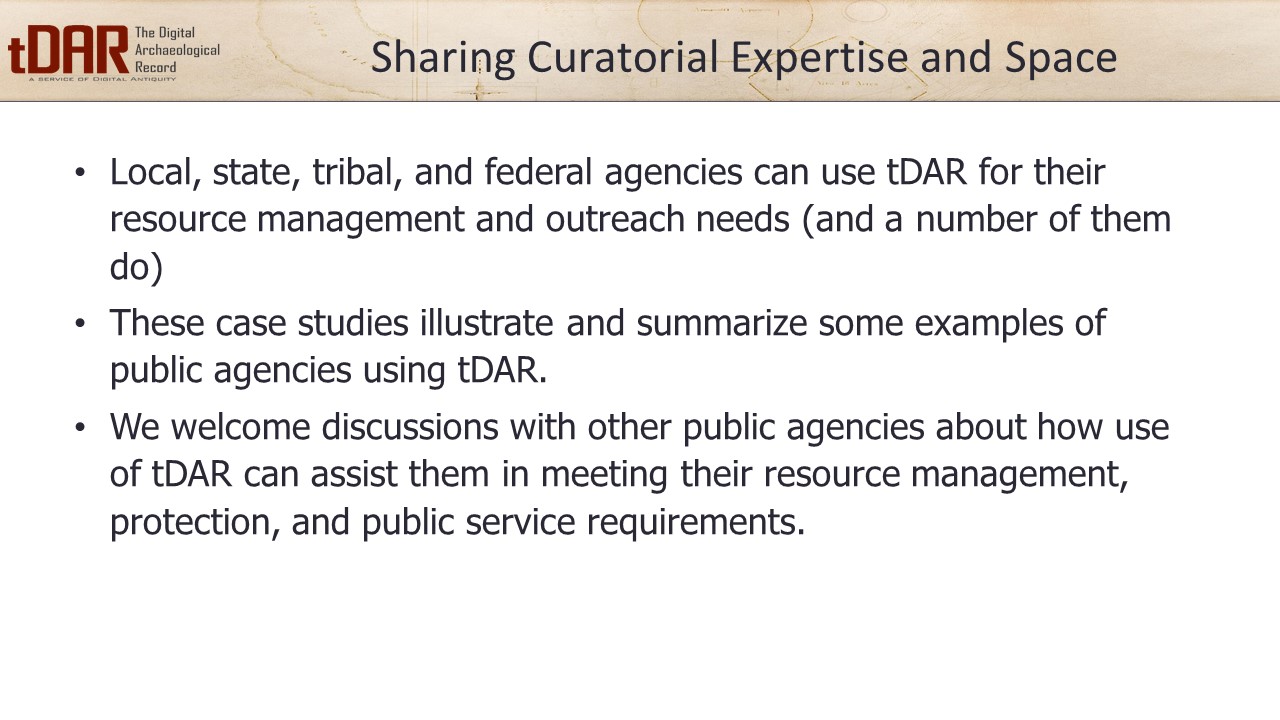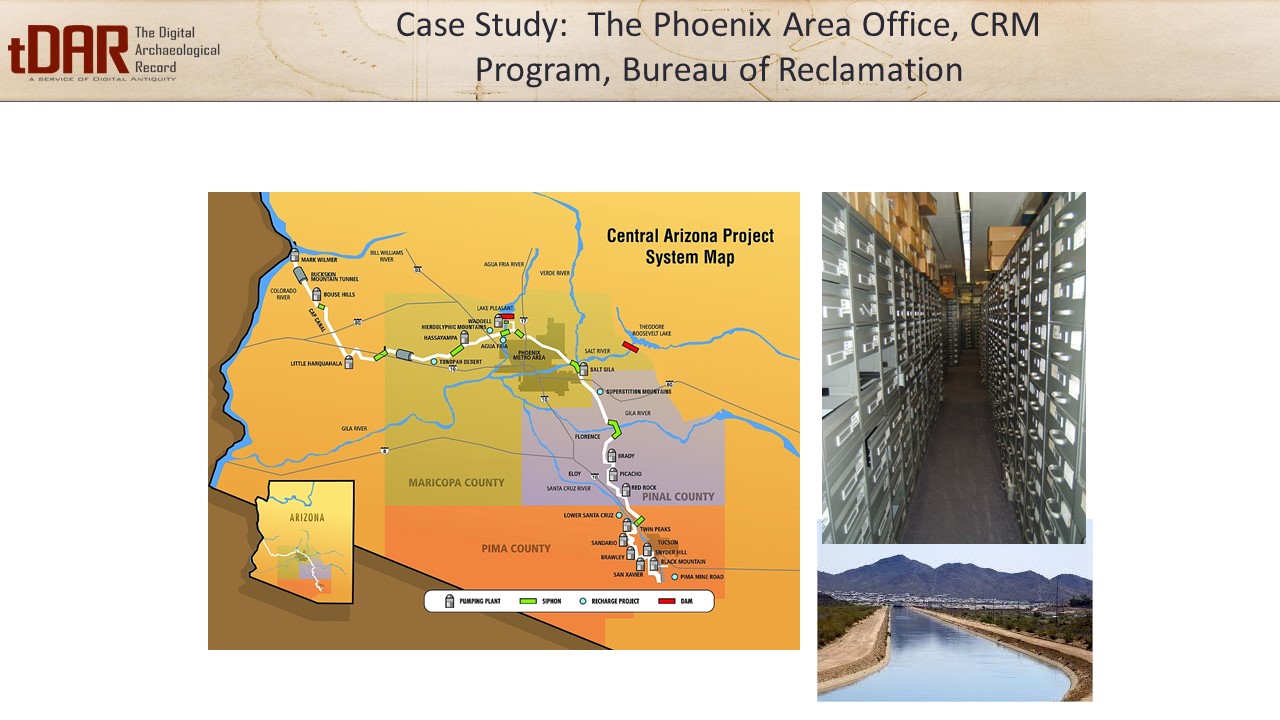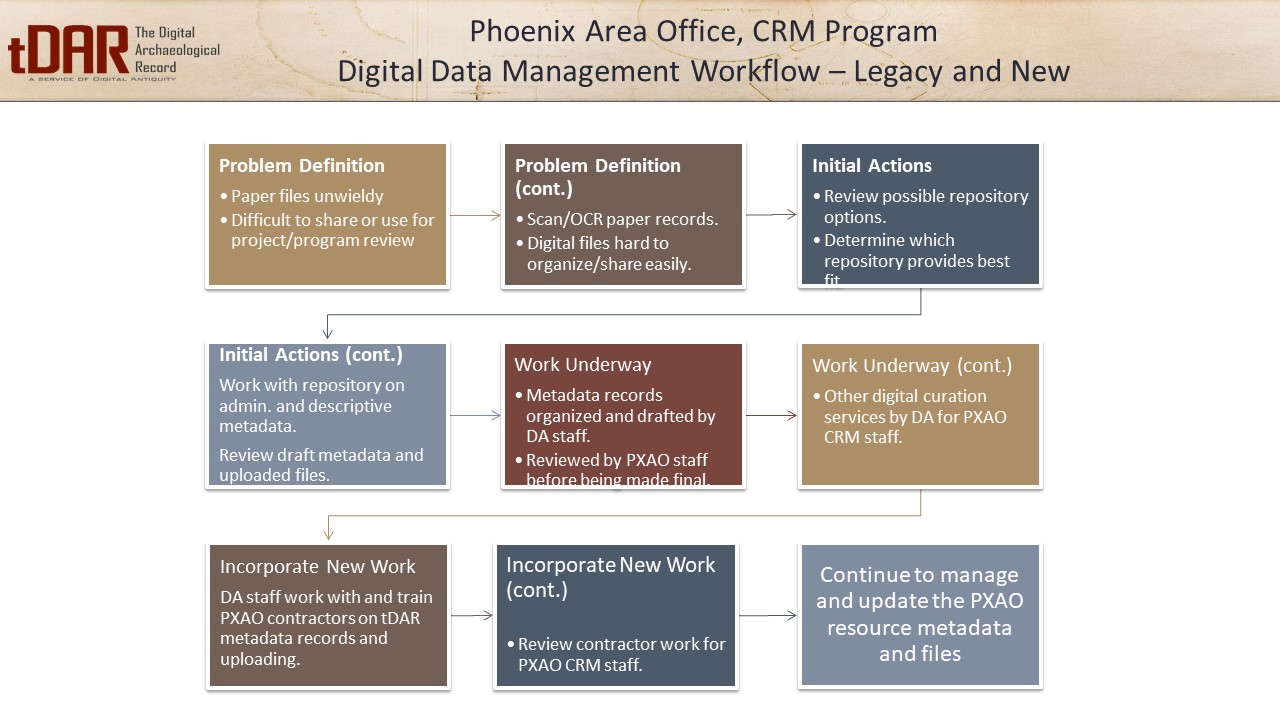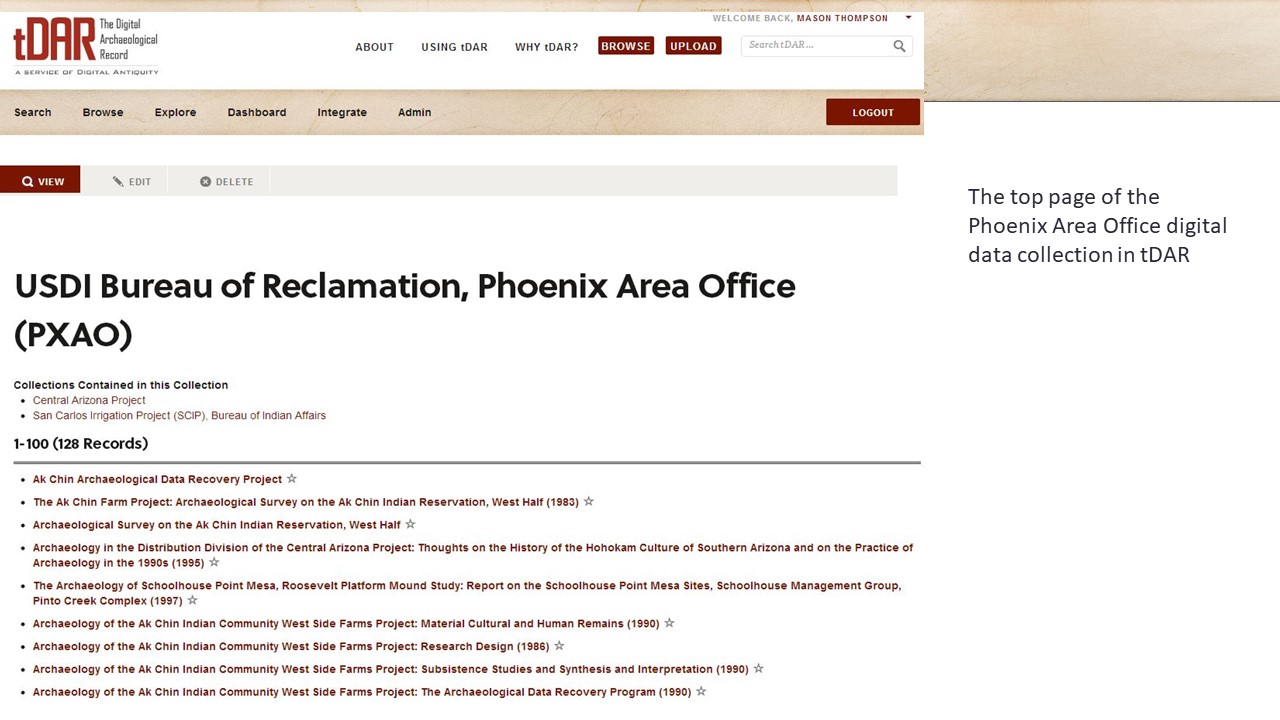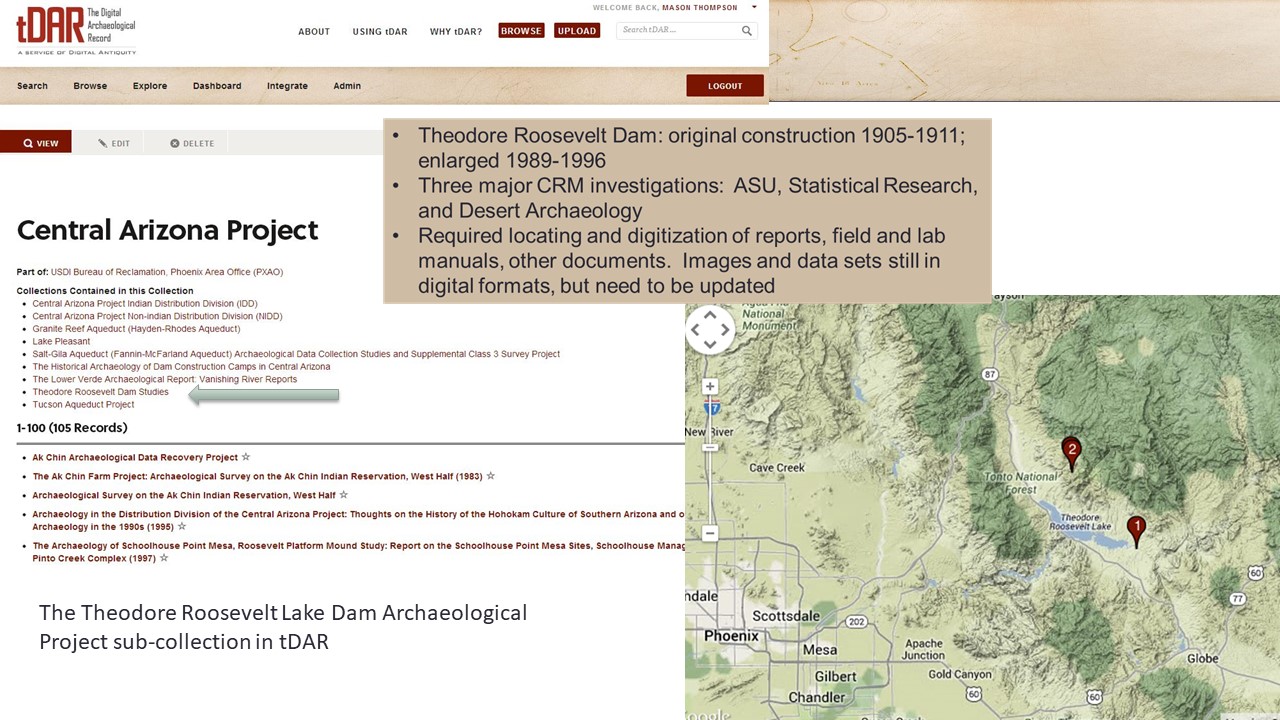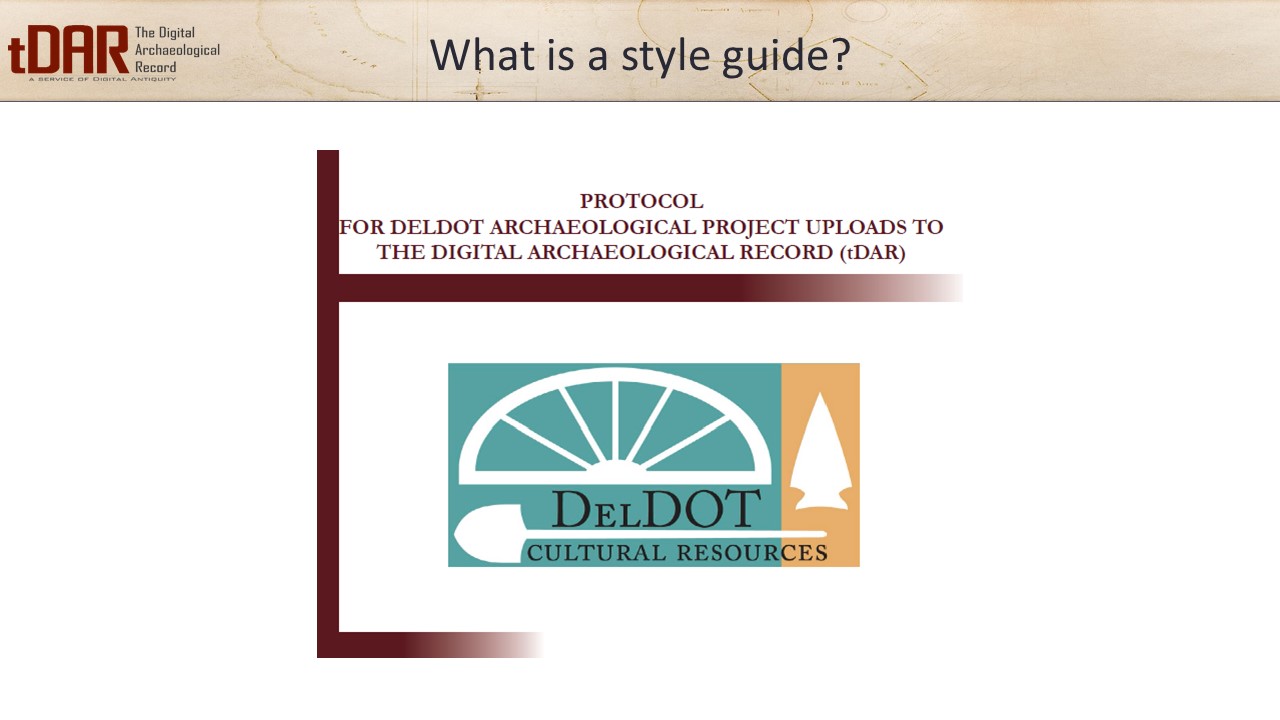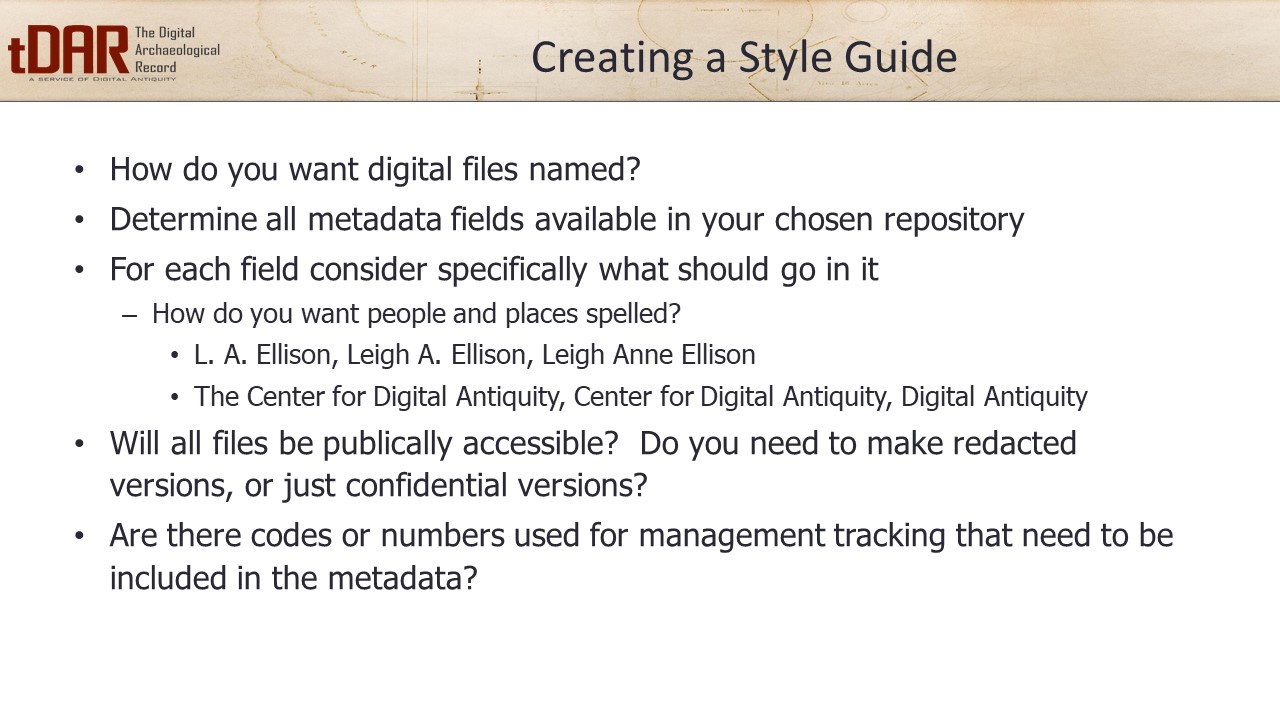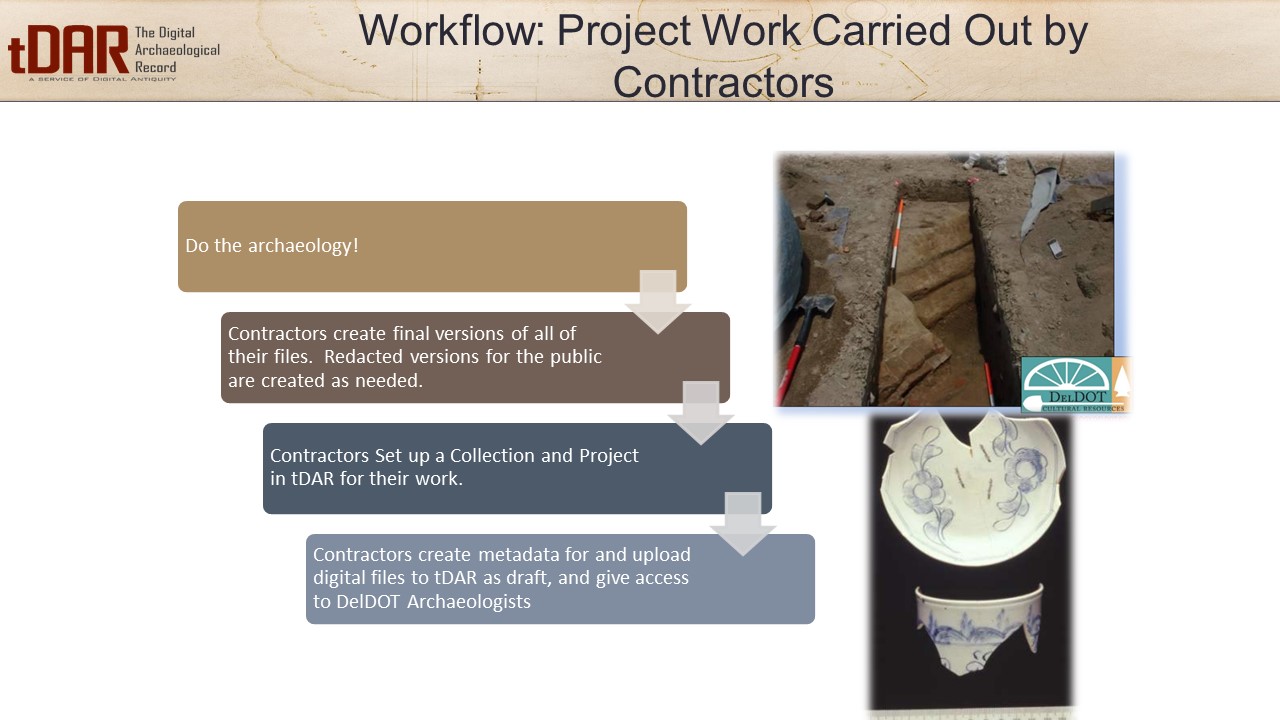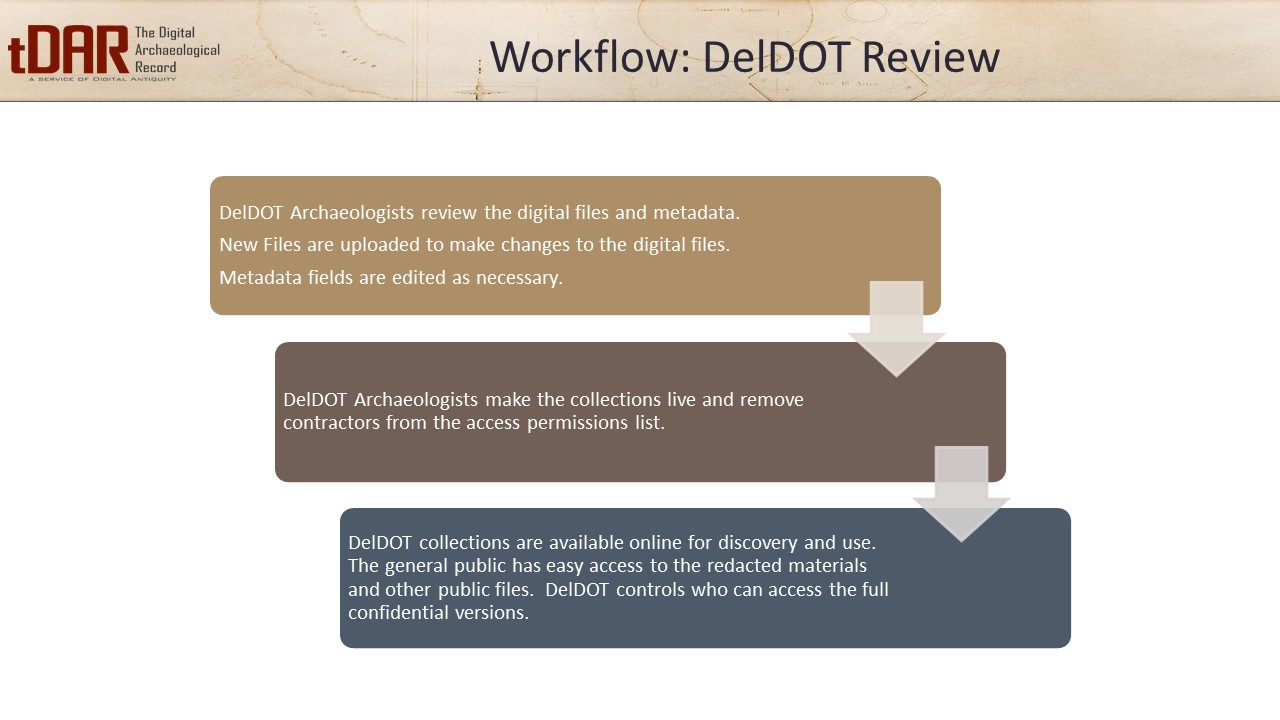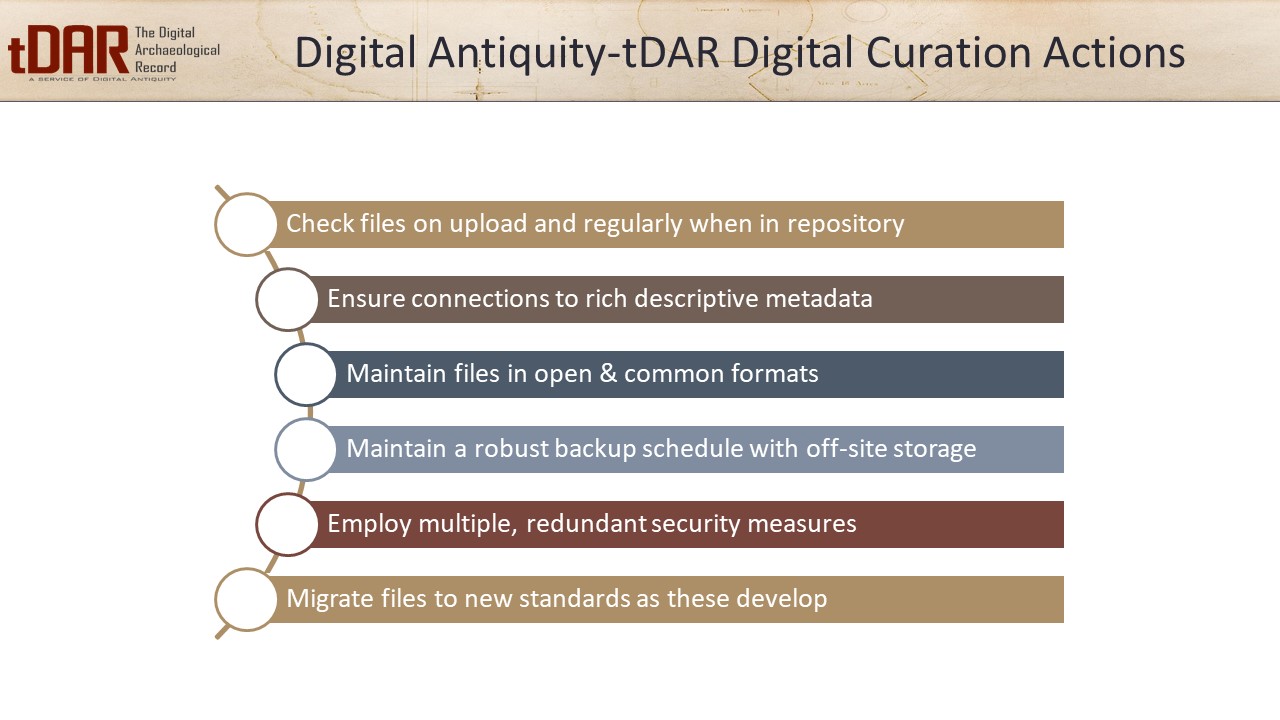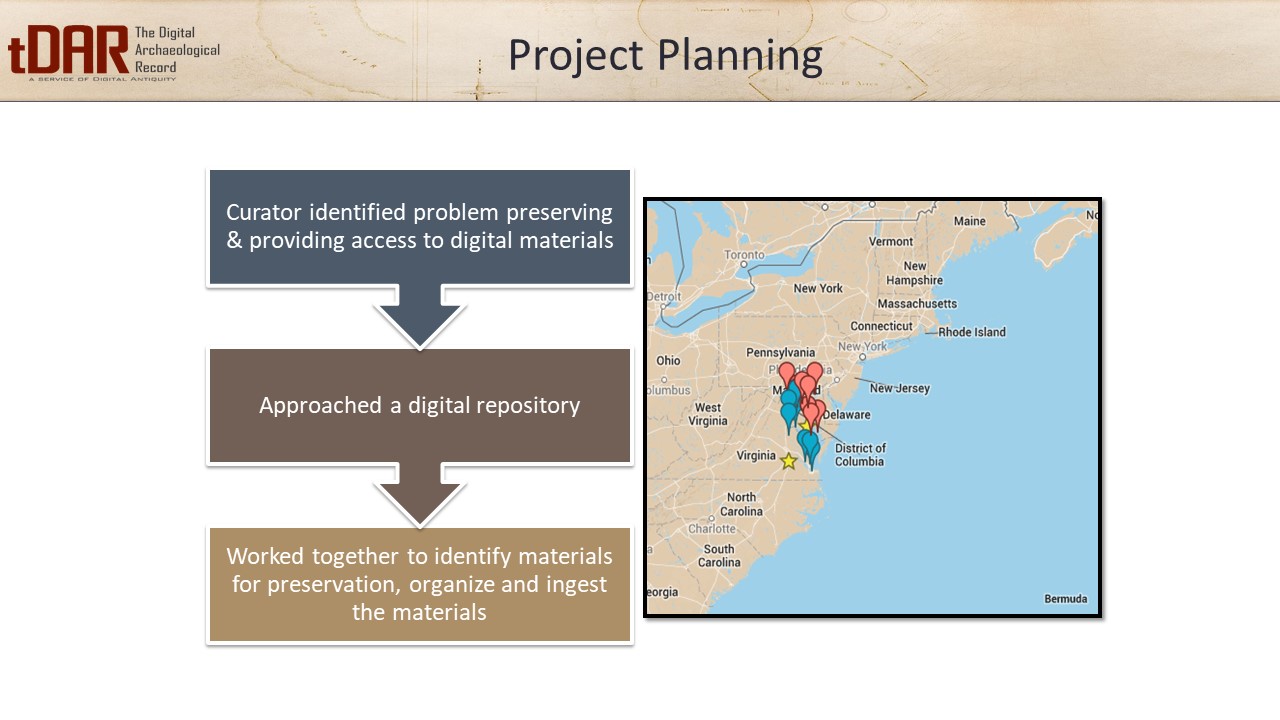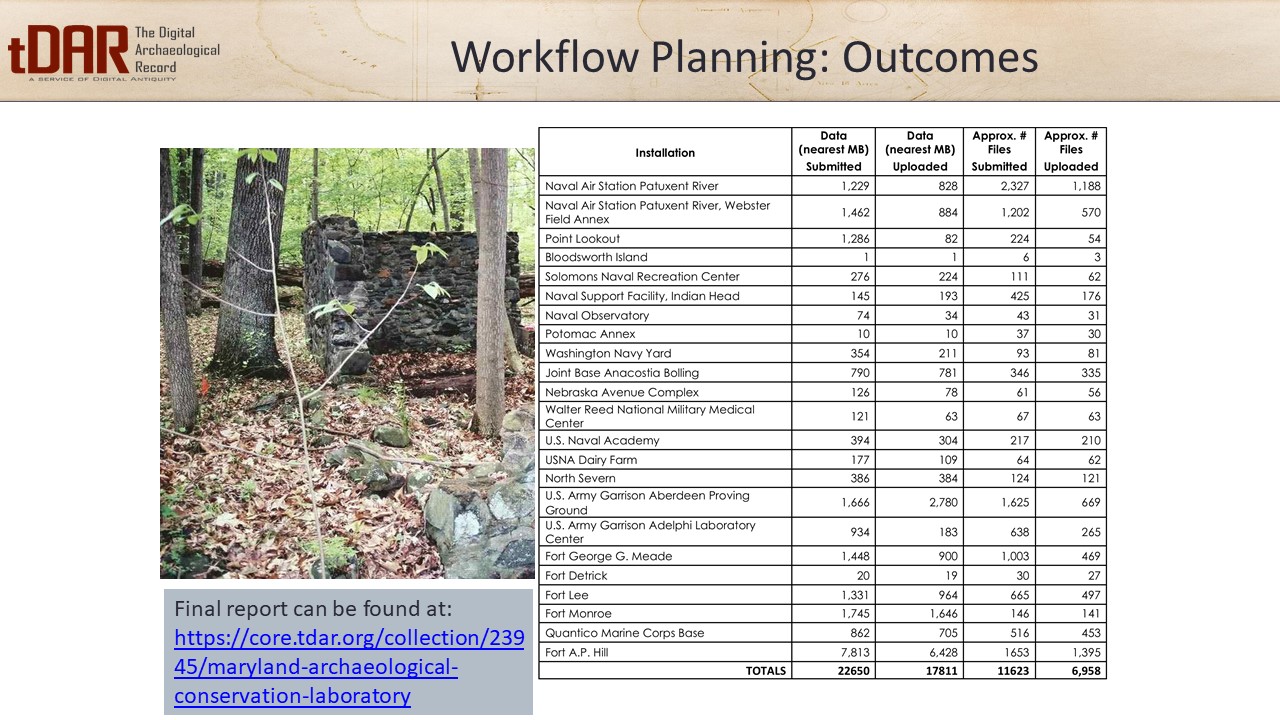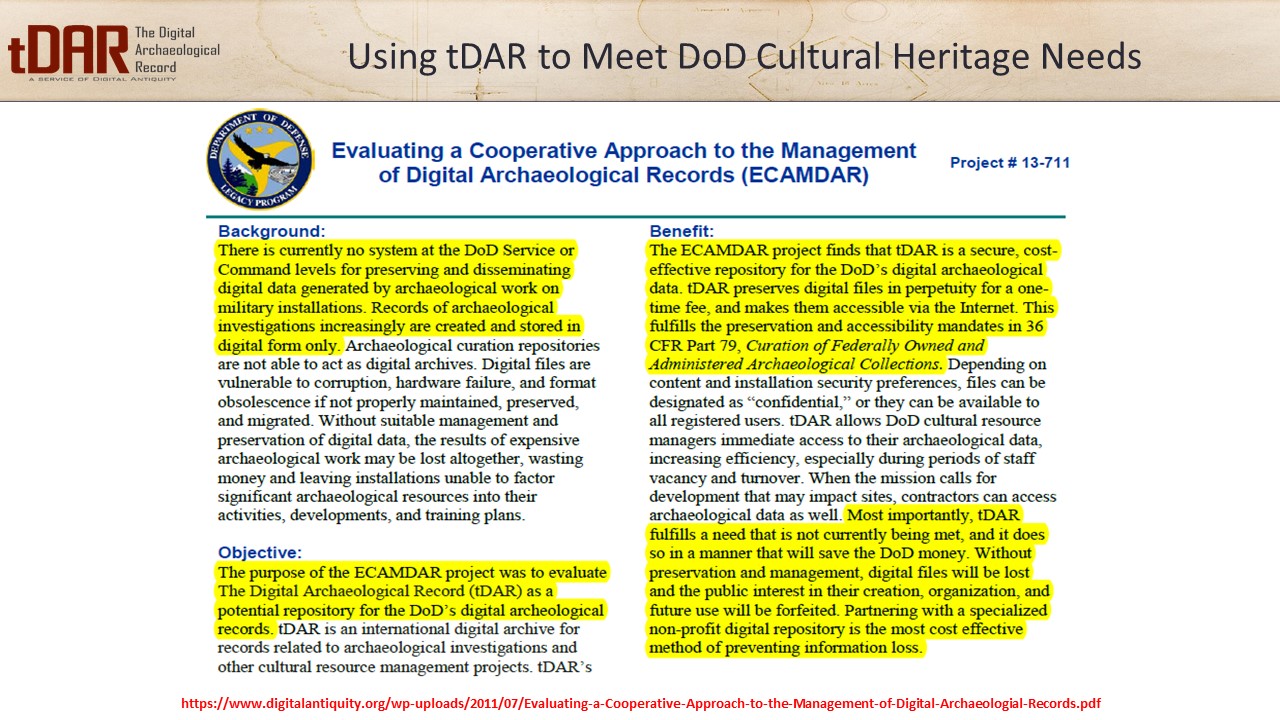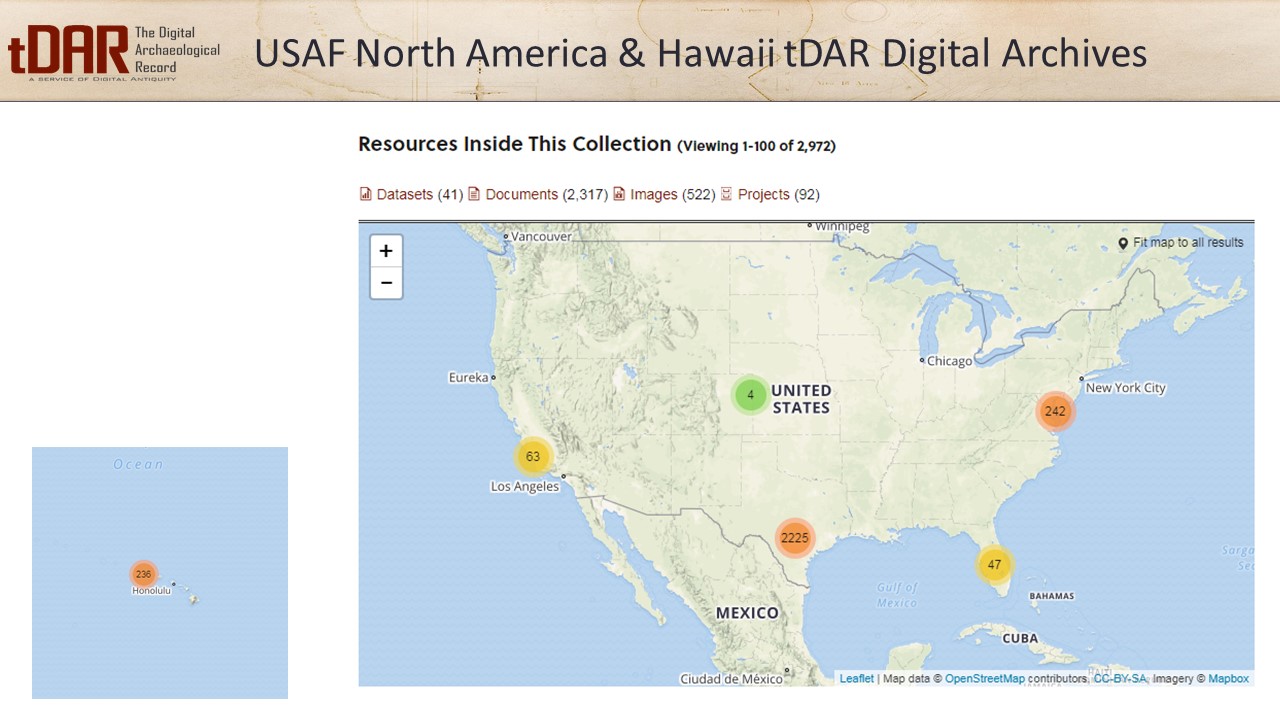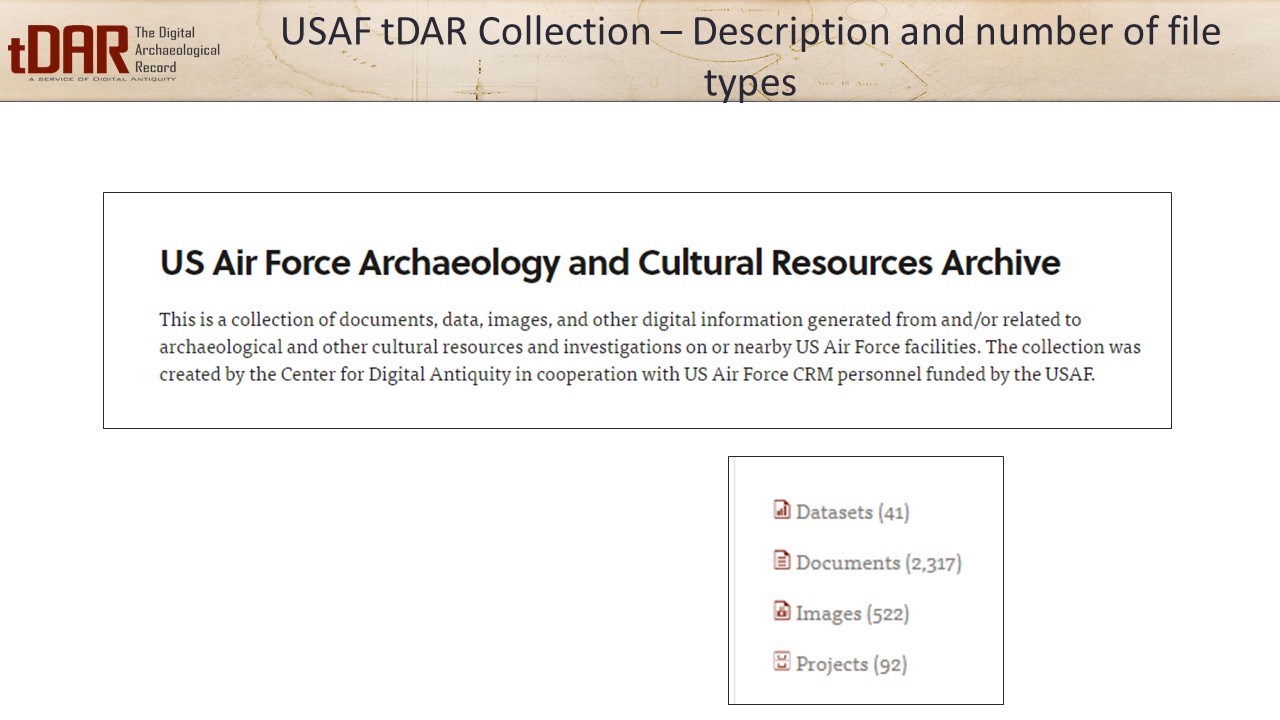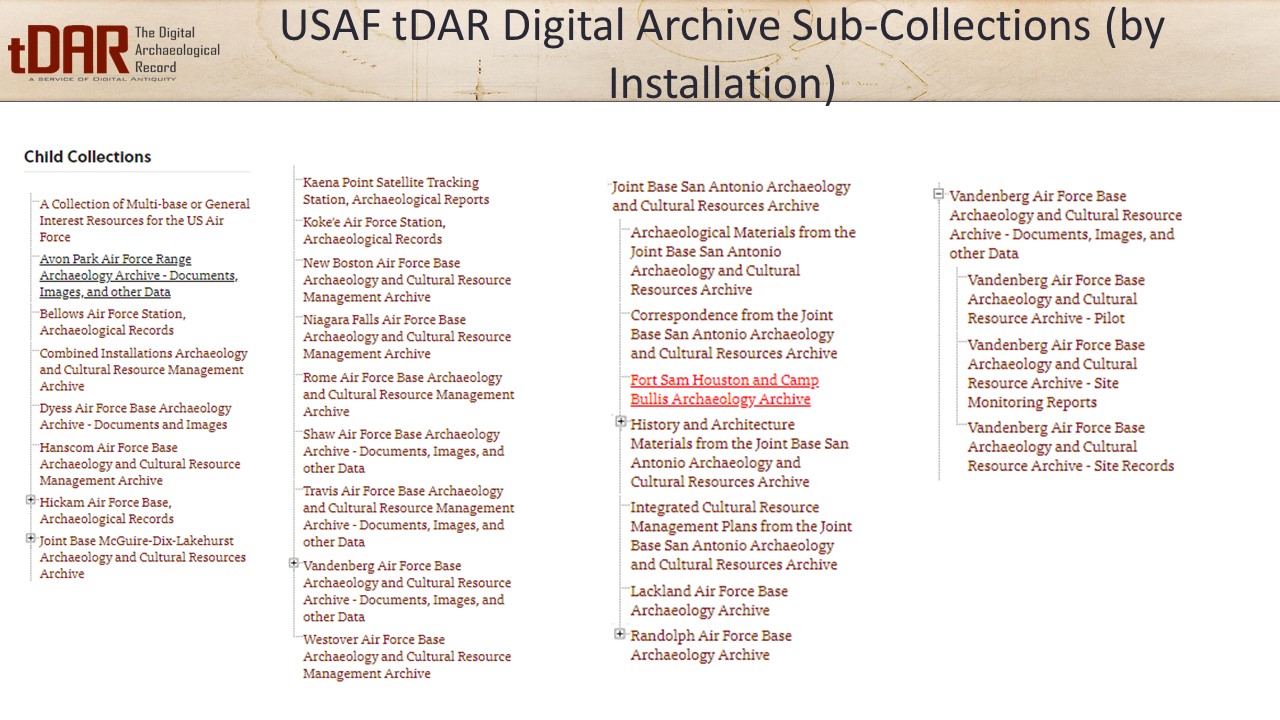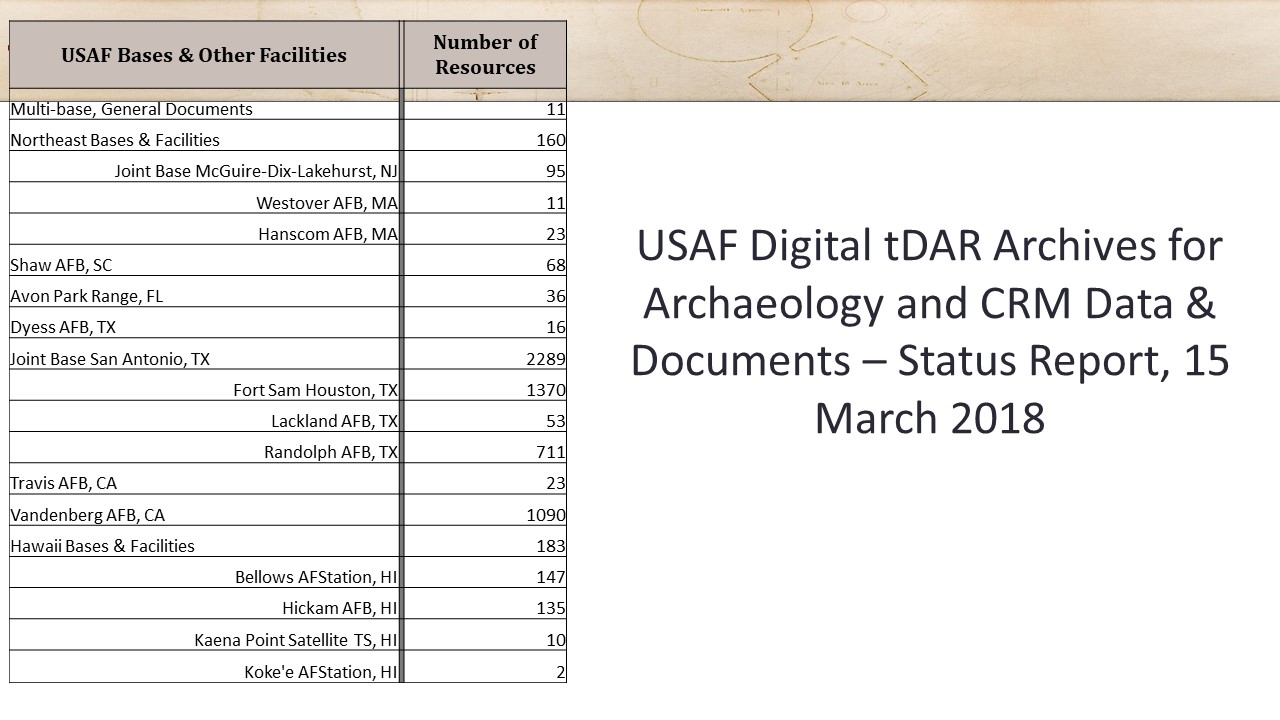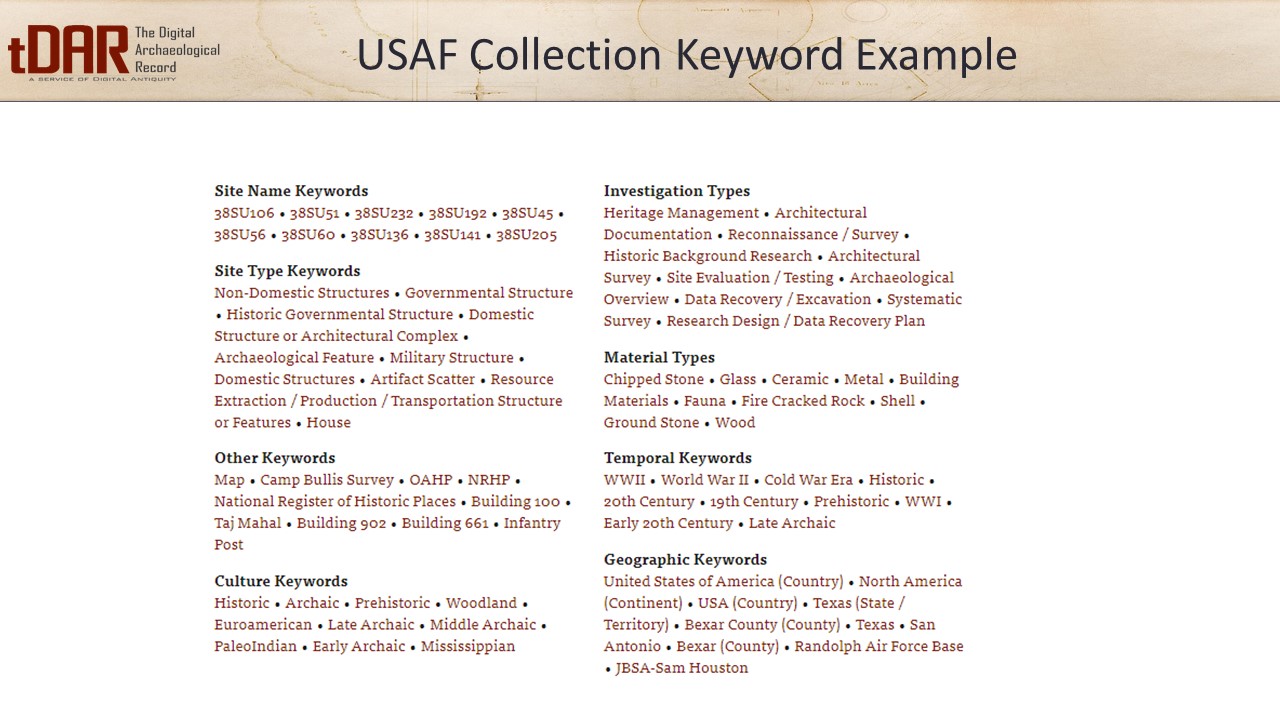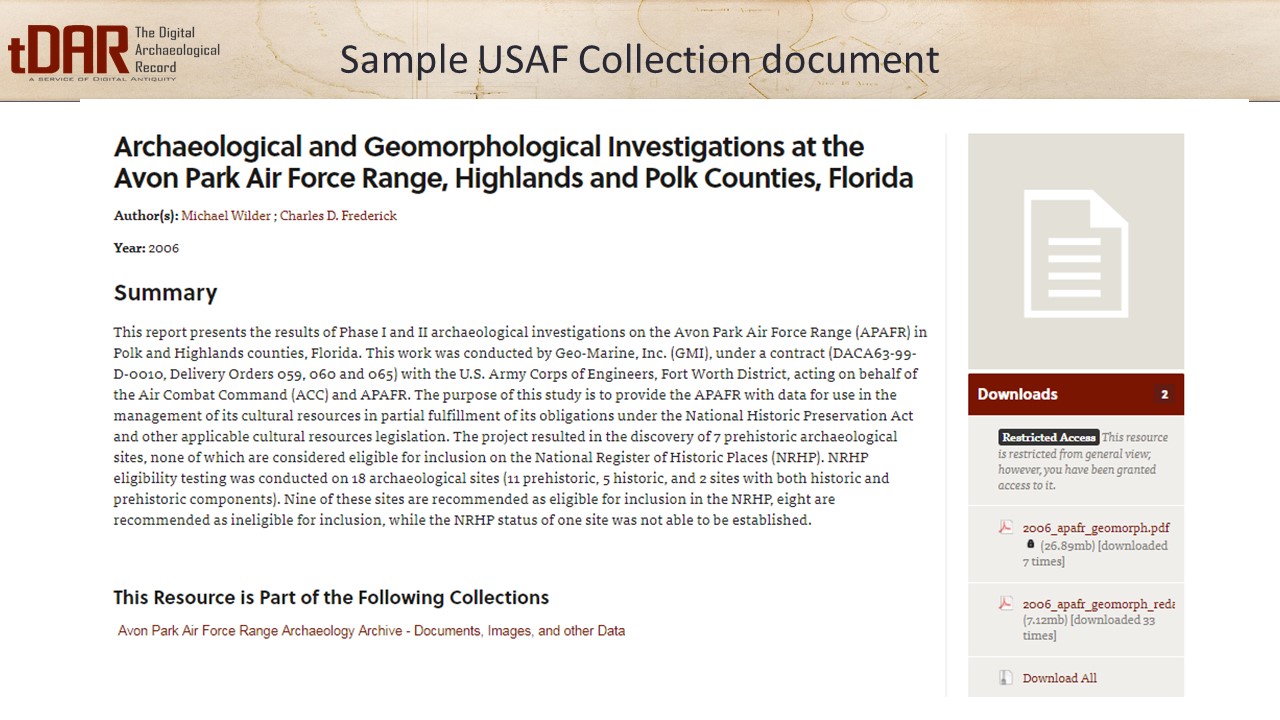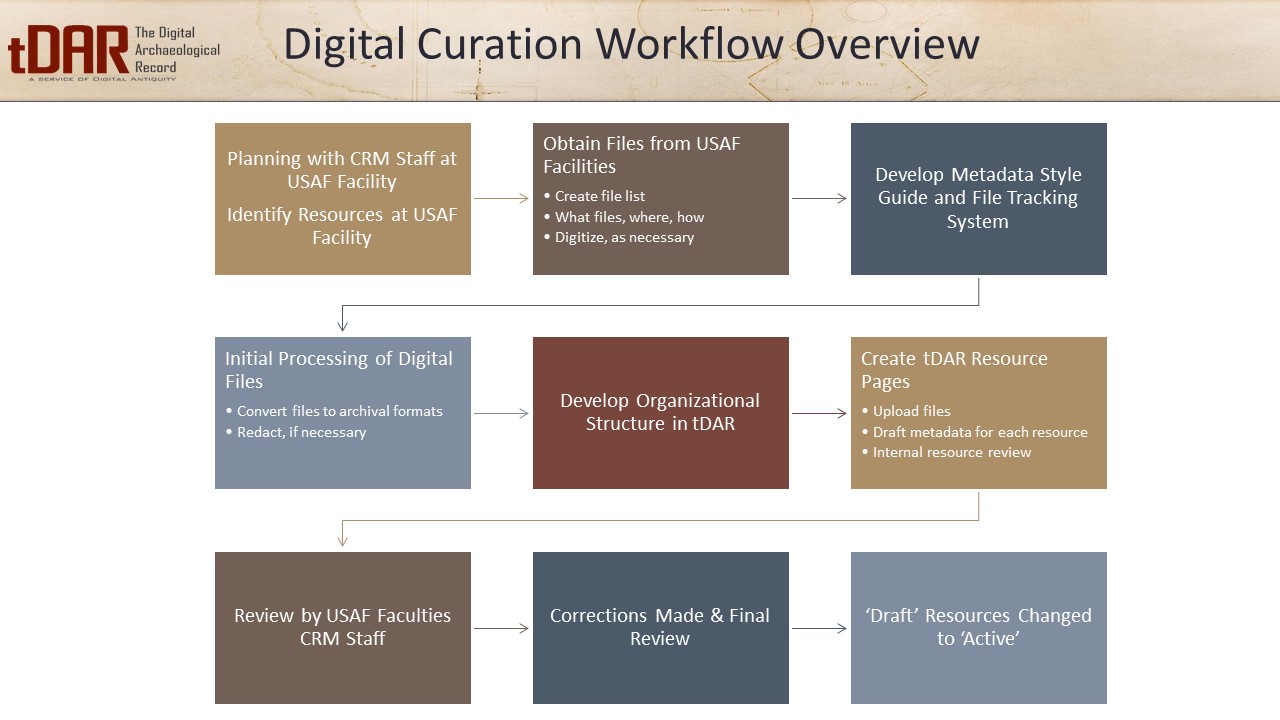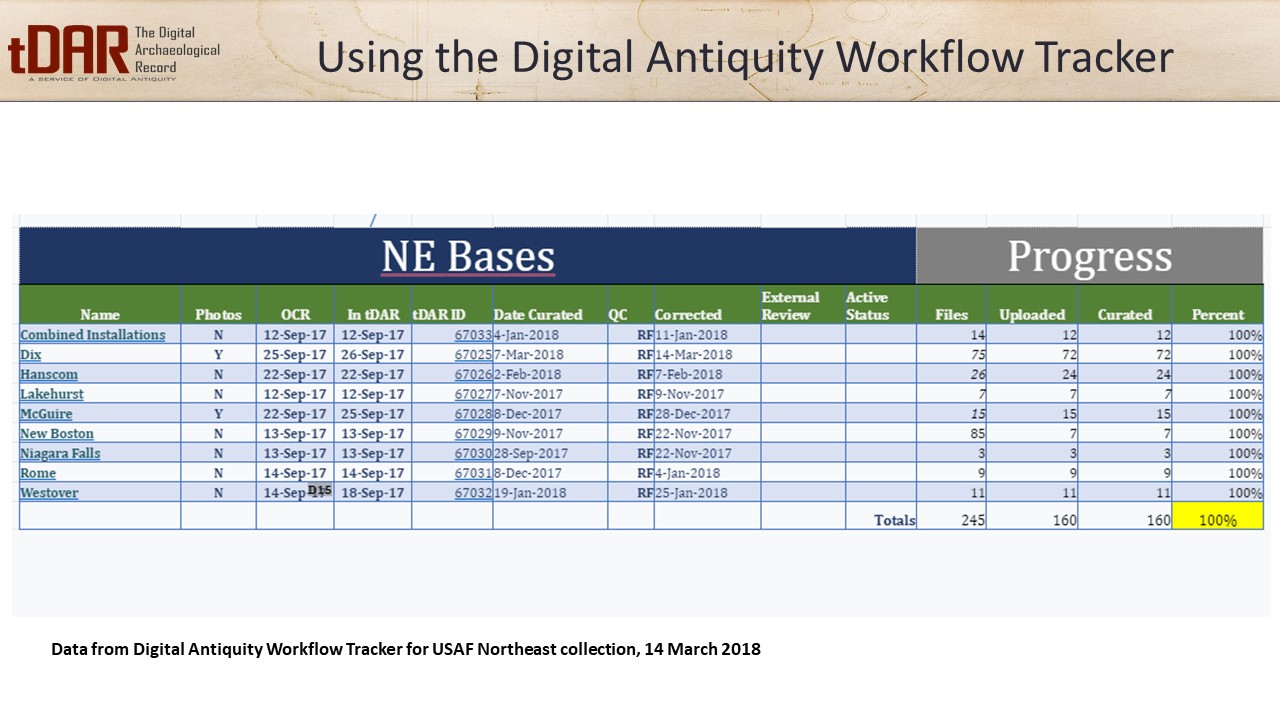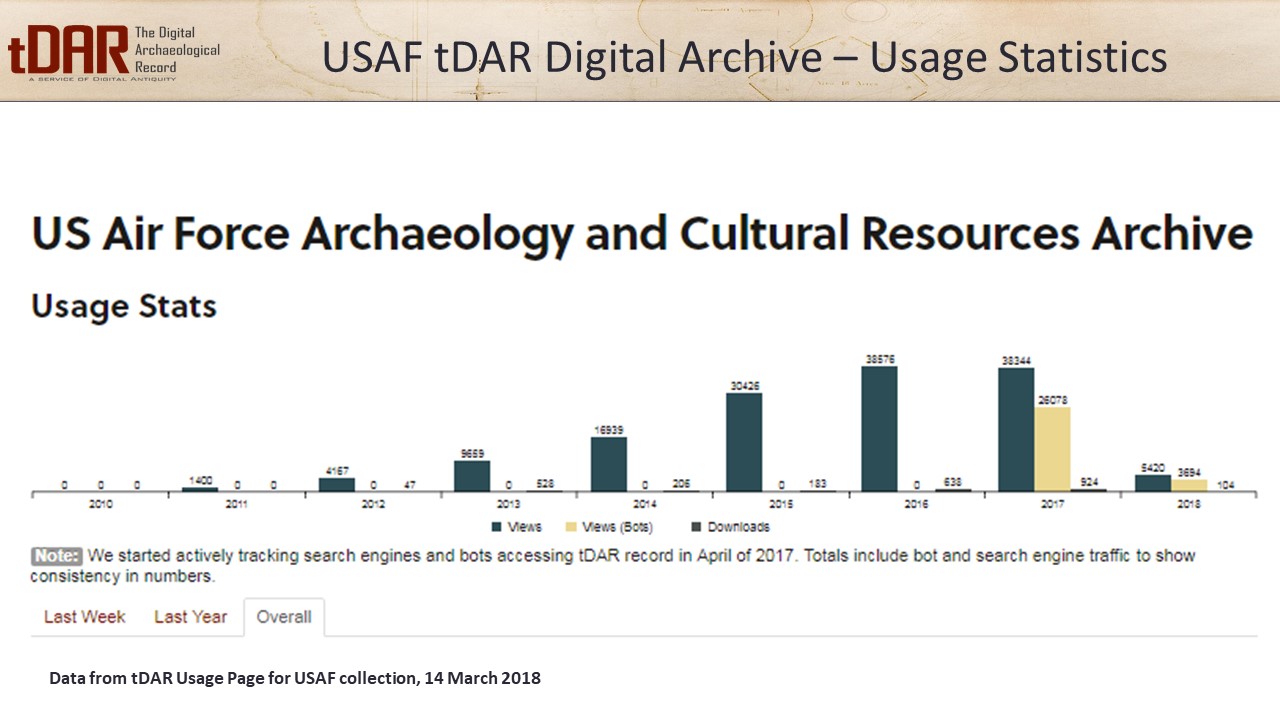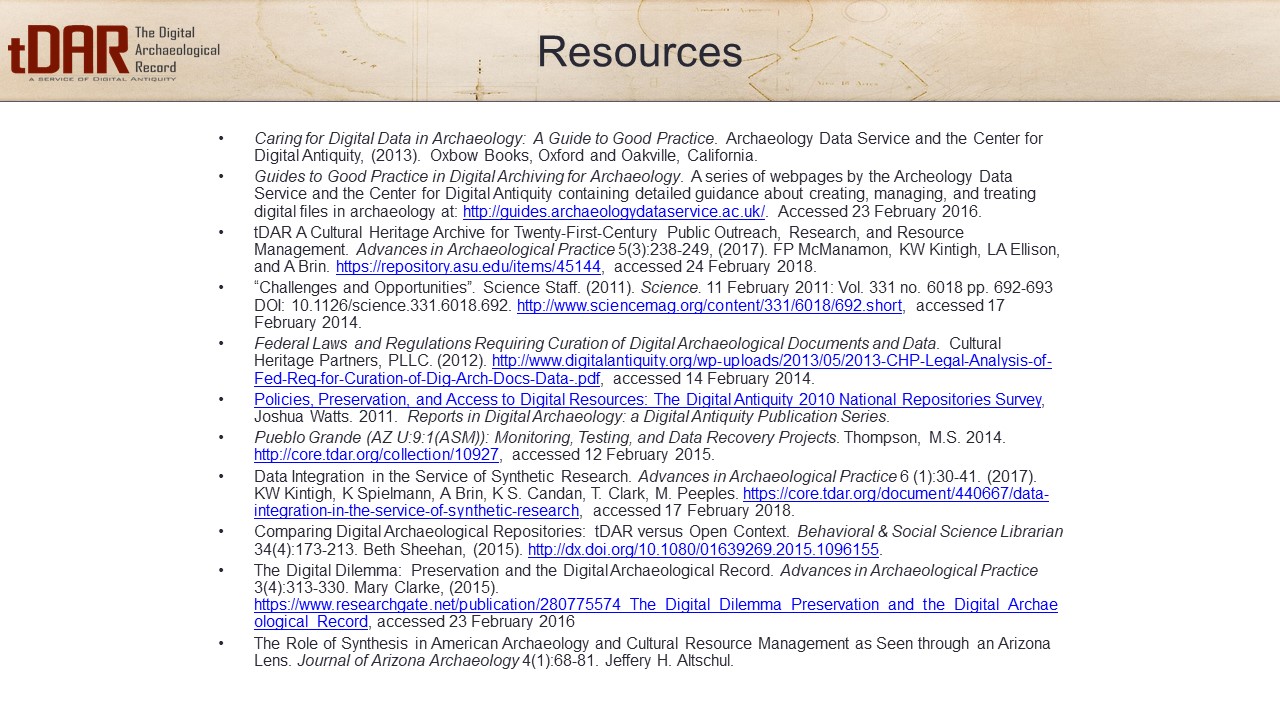Sharing Curation Expertise and Space for Digital Archaeological and Cultural Heritage Data
Leigh Anne Ellison Francis Pierce-McManamon
Abstract
Archaeologists are busy all the time. Often stretching to meet a variety of professional obligations. CRM and government agency archaeologists are among the most stretched given the different directions that pull upon their professional lives. Scholarly pursuits; administrative, bureaucratic, regulatory, and public outreach responsibilities related to physical sites and collections, easily fill or over-fill their schedules. Now the care and curation of digital data adds to the piling up of responsibilities. Digital data and the technical tools that create and enable its use present many opportunities for research and resource management. Digital technology makes data easily and widely accessible, sharing information, and enabling the creation of new interpretations and increase in overall knowledge. But, digital data must be curated or it will be lost. Digital curation doesn’t just happen, it requires attention, special expertise, and long-term commitment to the curation enterprise. The Digital Archaeological Record (tDAR) is a repository where individual archaeologists, agencies, and organizations deposit their data (e.g., documents, images, data sets, and more). Once deposited in tDAR the data are curated by digital archival specialists who focus on ensuring the data are protected, made available as the depositor determines, and kept available for use and re-use.
